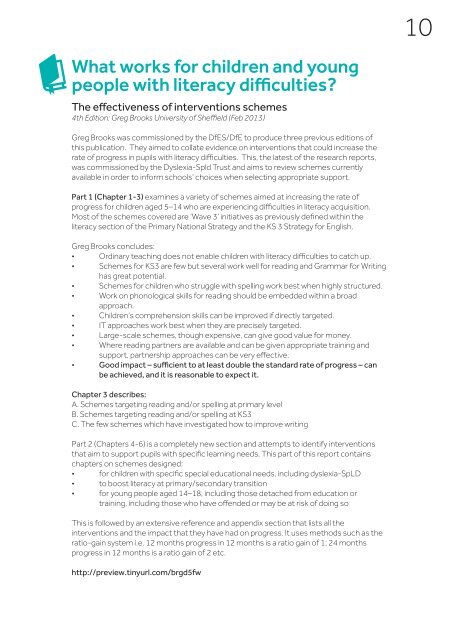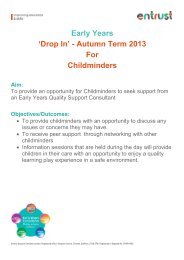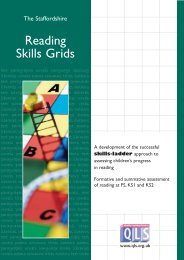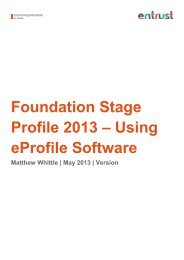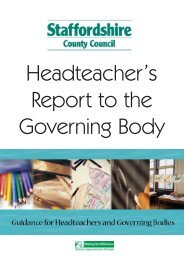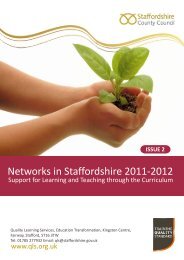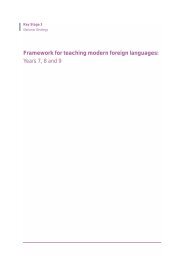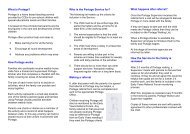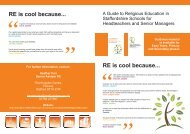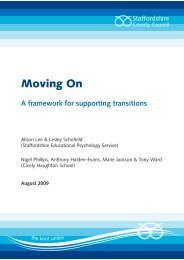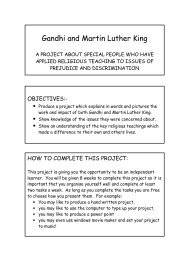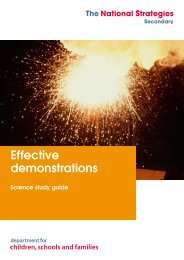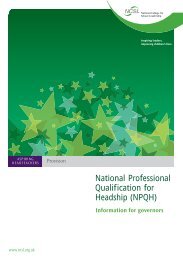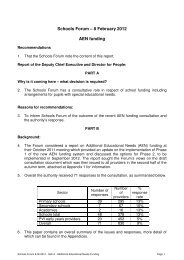SEN Newsletter - Summer 2013 - Staffordshire Learning Net ...
SEN Newsletter - Summer 2013 - Staffordshire Learning Net ...
SEN Newsletter - Summer 2013 - Staffordshire Learning Net ...
Create successful ePaper yourself
Turn your PDF publications into a flip-book with our unique Google optimized e-Paper software.
What works for children and young<br />
people with literacy difficulties?<br />
The effectiveness of interventions schemes<br />
4th Edition: Greg Brooks University of Sheffield (Feb <strong>2013</strong>)<br />
Greg Brooks was commissioned by the DfES/DfE to produce three previous editions of<br />
this publication. They aimed to collate evidence on interventions that could increase the<br />
rate of progress in pupils with literacy difficulties. This, the latest of the research reports,<br />
was commissioned by the Dyslexia-Spld Trust and aims to review schemes currently<br />
available in order to inform schools’ choices when selecting appropriate support.<br />
Part 1 (Chapter 1-3) examines a variety of schemes aimed at increasing the rate of<br />
progress for children aged 5–14 who are experiencing difficulties in literacy acquisition.<br />
Most of the schemes covered are ‘Wave 3’ initiatives as previously defined within the<br />
literacy section of the Primary National Strategy and the KS 3 Strategy for English.<br />
Greg Brooks concludes:<br />
• Ordinary teaching does not enable children with literacy difficulties to catch up.<br />
• Schemes for KS3 are few but several work well for reading and Grammar for Writing<br />
has great potential.<br />
• Schemes for children who struggle with spelling work best when highly structured.<br />
• Work on phonological skills for reading should be embedded within a broad<br />
approach.<br />
• Children’s comprehension skills can be improved if directly targeted.<br />
• IT approaches work best when they are precisely targeted.<br />
• Large-scale schemes, though expensive, can give good value for money.<br />
• Where reading partners are available and can be given appropriate training and<br />
support, partnership approaches can be very effective.<br />
• Good impact – sufficient to at least double the standard rate of progress – can<br />
be achieved, and it is reasonable to expect it.<br />
Chapter 3 describes:<br />
A. Schemes targeting reading and/or spelling at primary level<br />
B. Schemes targeting reading and/or spelling at KS3<br />
C. The few schemes which have investigated how to improve writing<br />
Part 2 (Chapters 4-6) is a completely new section and attempts to identify interventions<br />
that aim to support pupils with specific learning needs. This part of this report contains<br />
chapters on schemes designed:<br />
• for children with specific special educational needs, including dyslexia-SpLD<br />
• to boost literacy at primary/secondary transition<br />
• for young people aged 14–18, including those detached from education or<br />
training, including those who have offended or may be at risk of doing so<br />
This is followed by an extensive reference and appendix section that lists all the<br />
interventions and the impact that they have had on progress. It uses methods such as the<br />
ratio-gain system i.e. 12 months progress in 12 months is a ratio gain of 1; 24 months<br />
progress in 12 months is a ratio gain of 2 etc.<br />
http://preview.tinyurl.com/brgd5fw<br />
10


